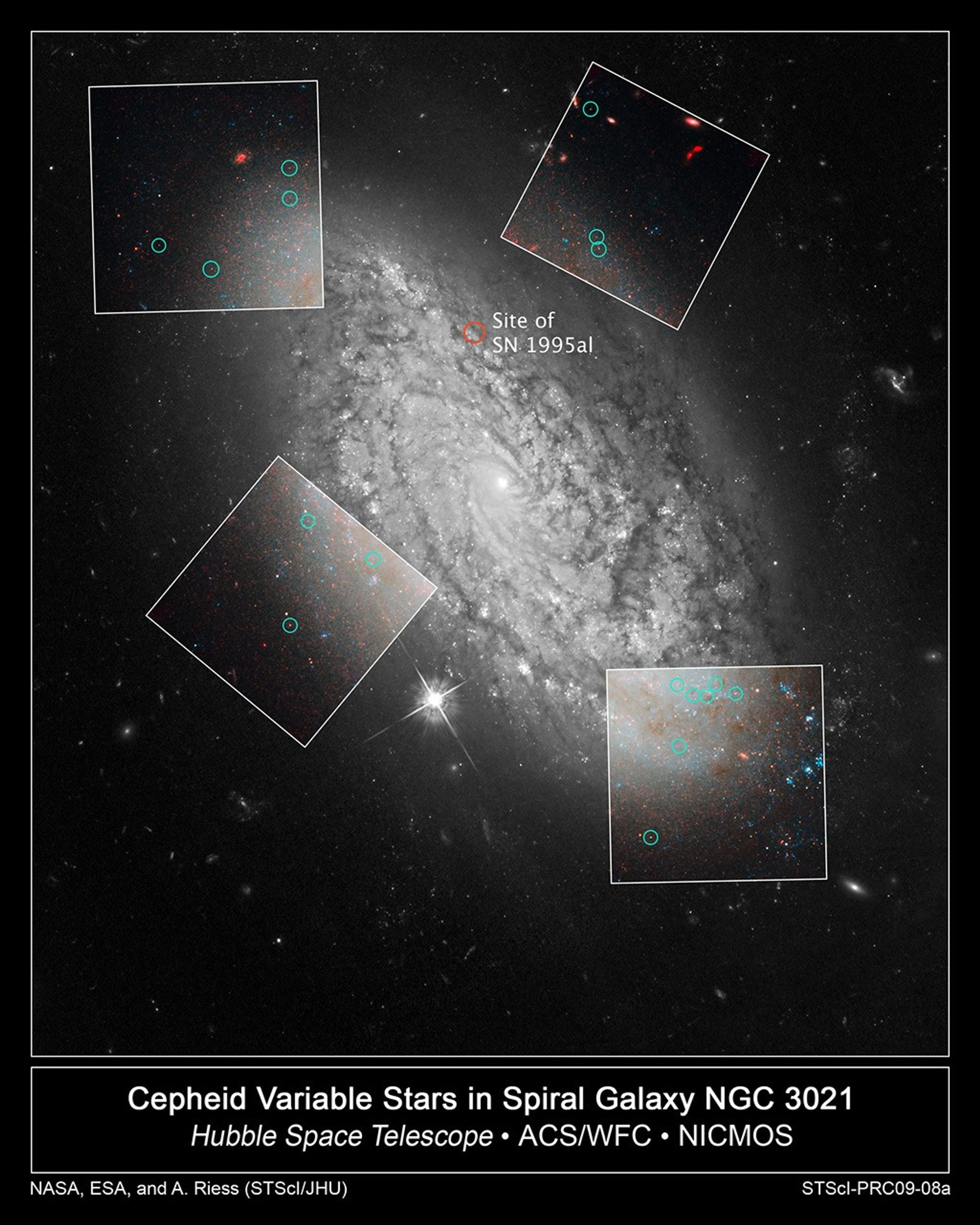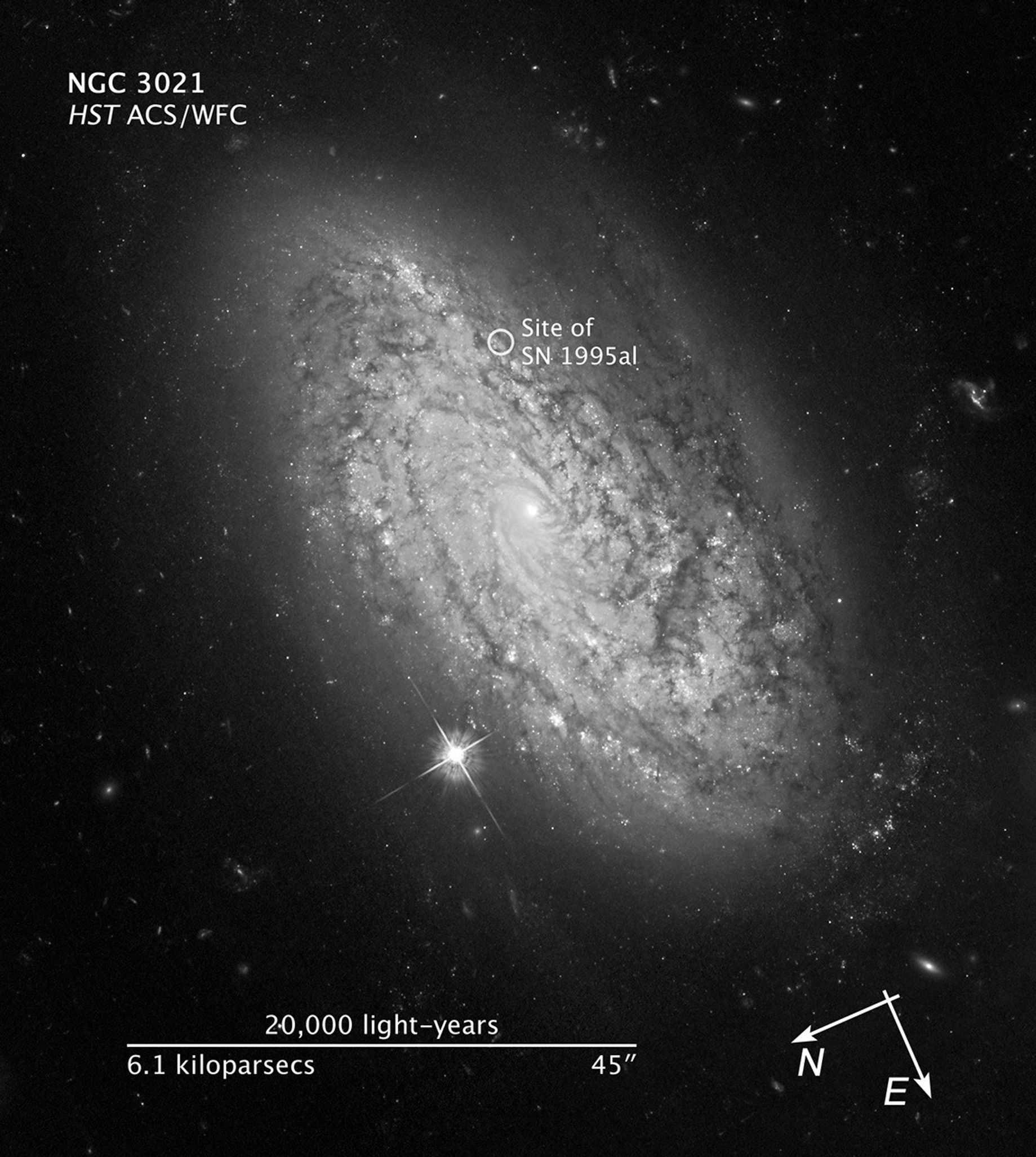1 min read
Three Steps to the Hubble Constant

Hubble measurements have simplified the cosmic "distance ladder," which is needed to calculate a more precise value for the universe's expansion rate, called the Hubble constant. At select host galaxies, Cepheid variable stars – known as reliable milepost markers – are cross-calibrated to Type Ia supernovae in the same host galaxy. The new technique reduced the distance ladder to three "rungs": (1) The distance to galaxy NGC 4258 is measured using straightforward geometry and Kepler's laws; (2) Cepheids in six more distant galaxies are used to calibrate the luminosity of Type Ia supernovae; (3) The Hubble constant is measured by observing a brighter milepost marker, Type Ia supernovae, in more distant galaxies hundreds of millions of light-years away, embedded in the expanding universe.
- Release DateMay 7, 2009
- Science ReleaseRefined Hubble Constant Narrows Possible Explanations for Dark Energy
- Credit
Related Images & Videos

Cepheid Variable Stars in Spiral Galaxy NGC 3021
This is a Hubble Space Telescope photo of the spiral galaxy NGC 3021. This was one of several hosts of recent Type Ia supernovae observed by astronomers to refine the measure of the universe's expansion rate, called the Hubble constant. Hubble made precise measurements of...
Share
Details
Last Updated
Aug 17, 2025
Contact
Media
Claire Andreoli
NASA’s Goddard Space Flight Center
Greenbelt, Maryland
claire.andreoli@nasa.gov





































